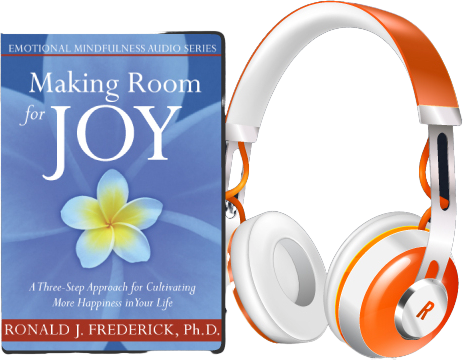This is the fourteenth in a series of articles where I take a look at key words and phrases that play an important role in the work I do, helping people discover ways to live and love like they mean it.
You can view the entire series here.
Subscribe to our newsletter to have these posts delivered straight to your inbox.
When we’re feeling triggered, identifying and simply naming our feelings decreases anxiety. That may sound like a bold statement, but it’s backed up by science.
Research by UCLA psychologist Matthew Lieberman and his colleagues confirms that attaching a label to a feeling dampens the fear response and thus decreases emotional distress. On a physiological level, this process of naming our feelings actually calms the amygdala, the part of the brain that’s our fear response center.
Acknowledging and naming our feelings— whether they are anger, sadness, anxiety or fear, happiness, love, guilt or shame, or even just a vague sense of an emotion — enables us to regulate our own nervous system and puts us back in control.
When Choosing a Name, Simplicity is Key
Sometimes, by just simply paying attention to our felt experience, we can easily bring our emotions into focus to the extent that we are able to name them.
And choosing a name for our feelings shouldn’t be a complicated endeavor. We don’t need to use a lot of words. In fact, just a few can go a long way.
For example, I feel sad, I’m angry, and I feel happy are short phrases that carry a lot of information. These statements all clearly express an emotional experience and leave no doubt about what’s going on for us.
More elaborate explanations or justifications often lead us to start talking or thinking about our feelings rather than just naming them. For instance, we may say things like, “I feel that my life is a mess.” Although this is a compelling statement, it says nothing about how we feel. It can’t. It’s a thought, not a feeling. Instead, we might say, “I’m feeling angry (or frustrated or sad) that my life is such a mess.”
You’ll Instantly Know if a Name is Right
One of the great things about the process of naming feelings is that when we’re able to stay open to our emotional experience, we get instant feedback.
It’s as if we’re taking some kind of exam or survey online, and, after we type in our answer and hit the Enter key, we get a response. It could be “That’s correct!” or “Wrong!” flashing on the screen.
The same is true for naming feelings. If the name we give a feeling doesn’t fit, we can immediately tell that we haven’t hit the mark because our emotional energy doesn’t change. But when it does fit, it’s like a puzzle piece easily snapping into place. We experience a shift in the energy in our body, a sense of relief comes over us, and our anxiety settles down a bit.
Naming Complicated or Multiple Feelings
Sometimes what we’re feeling is not so clear and our emotional experience is not so readily apparent. We may be experiencing a number of feelings that need to be untangled. When this happens, carefully considering each of the basic emotions can be quite helpful (anger, sadness, happiness, love, fear, guilt and shame).
One of my clients recognized that he had a confusing mix of feelings following an argument with his partner. As we explored those feelings together, he was able to identify that he was feeling angry, sad, loving, and anxious.
His anger, sadness, and love were valid responses in light of the disruption he was experiencing in his relationship, but his anxiety had more to do with his discomfort around feelings in general.
Being able to identify and name each of these emotions helped him sort out his experience, as well as decrease the anxiety he was feeling.
Something to Try
The Naming Tool
You can use this tool to help you identify and label what you are feeling. It’s especially useful when you’re feeling anxious or uncomfortable:
Step 1: Notice the presence of a feeling.
Step 2: Focus your attention inward on your bodily felt experience and try to stay present to it.
Step 3: Try to identify and name what you are feeling (angry, sad, happy, etc). If the feeling is not clear, take some time to sit with it. Tune in to it and the sensations that surround it.
Step 4: See if the label you have given the feeling fits. Does the name and sensation it gives you “click” into place? You’ll know when you’ve got it right because you’ll notice a change in your body. So take a moment to sit with this new awareness.
By naming the feelings you experience when you’ve been triggered, you give yourself time to be with your felt experience. This will reduce your anxiety and make it easier for you to get unhooked from the situation you find yourself in and discover a path to a better place.



